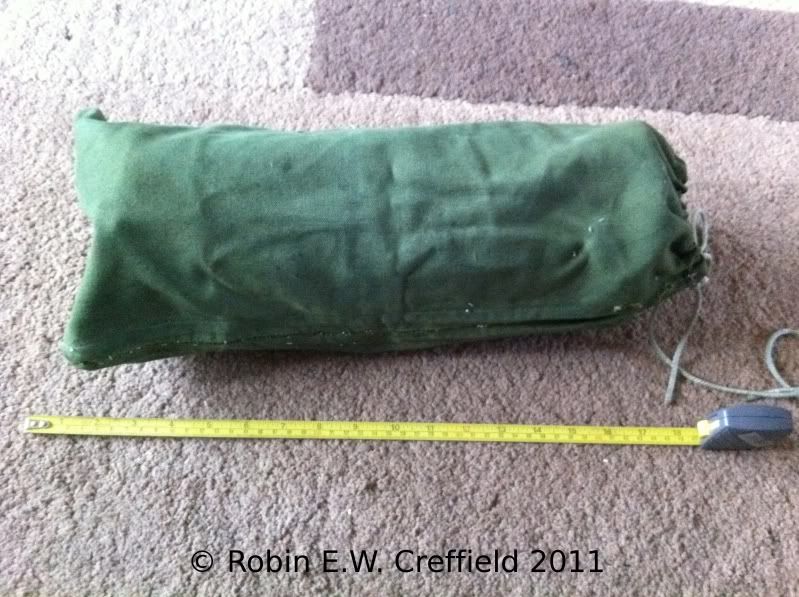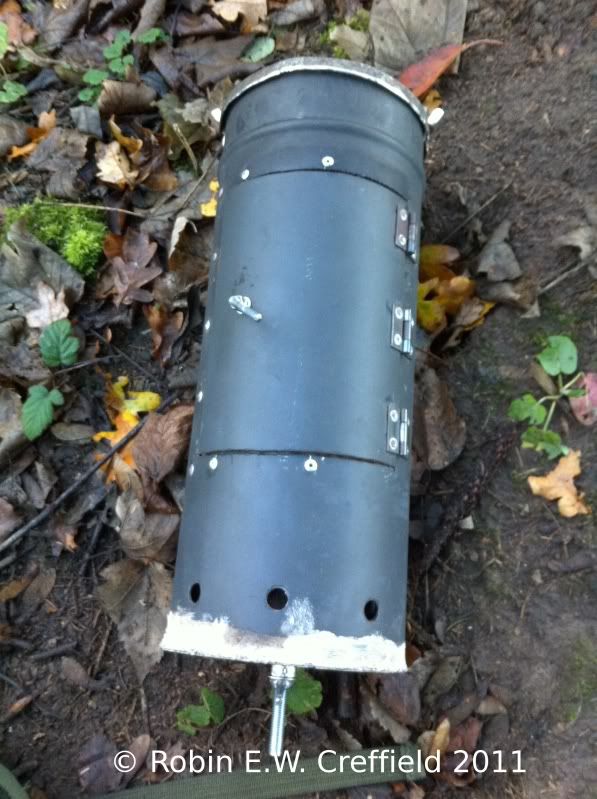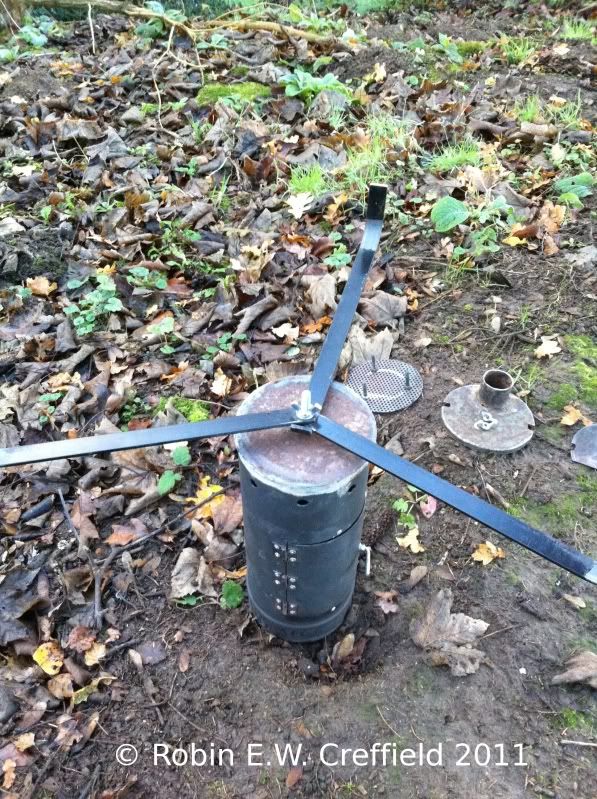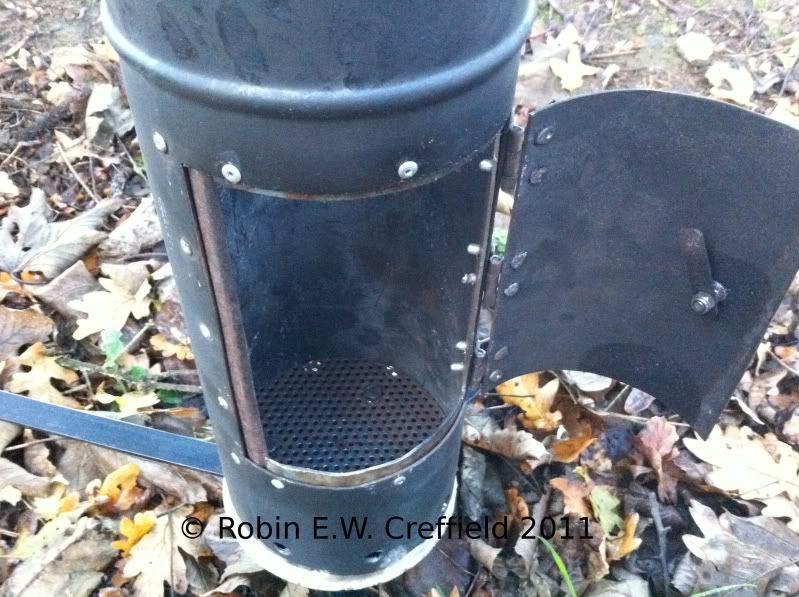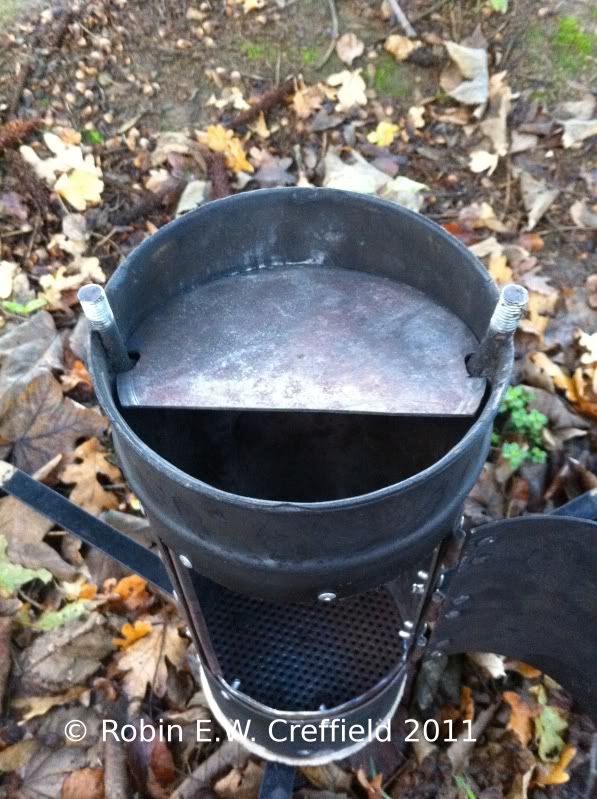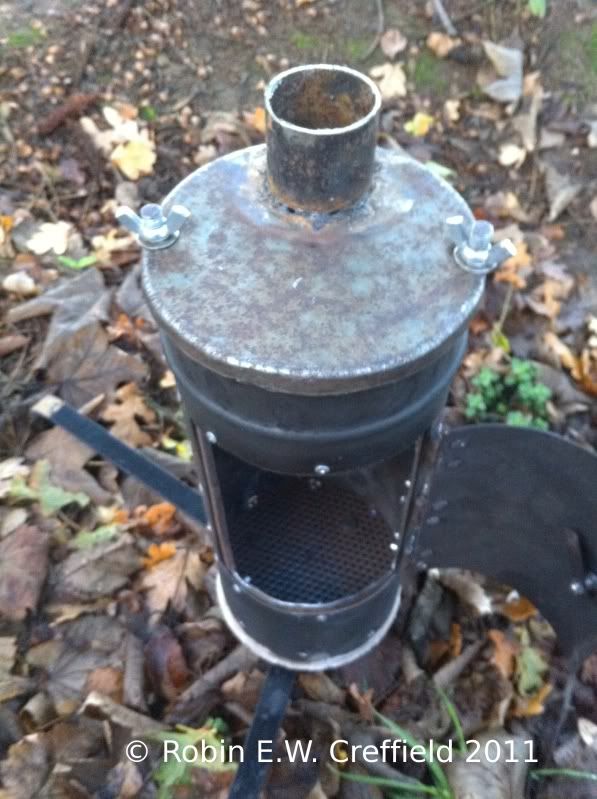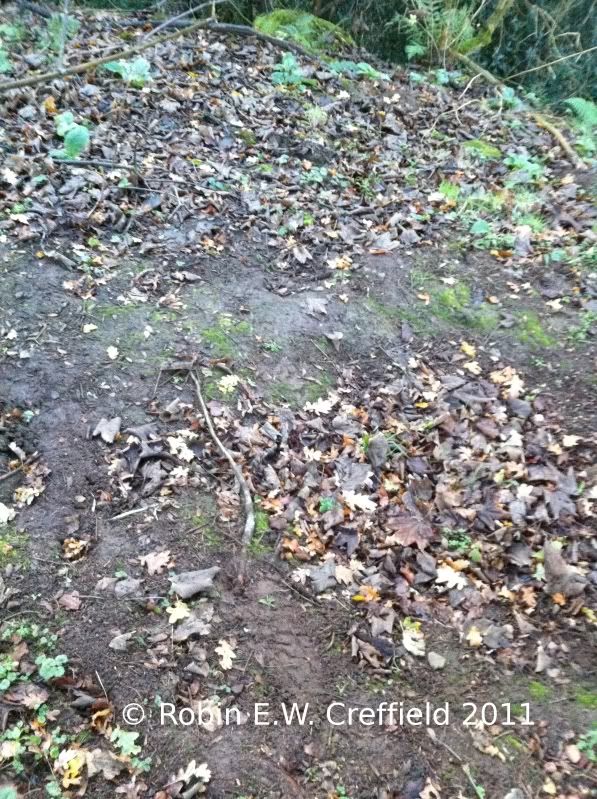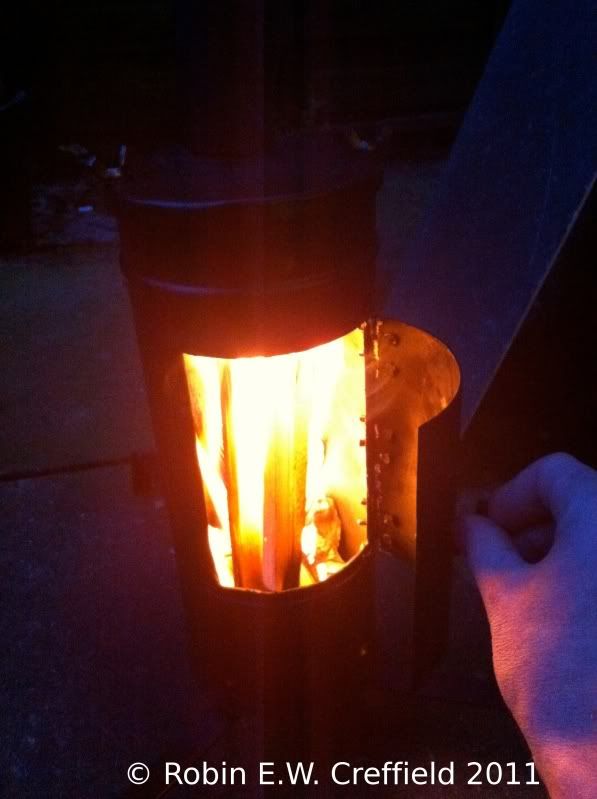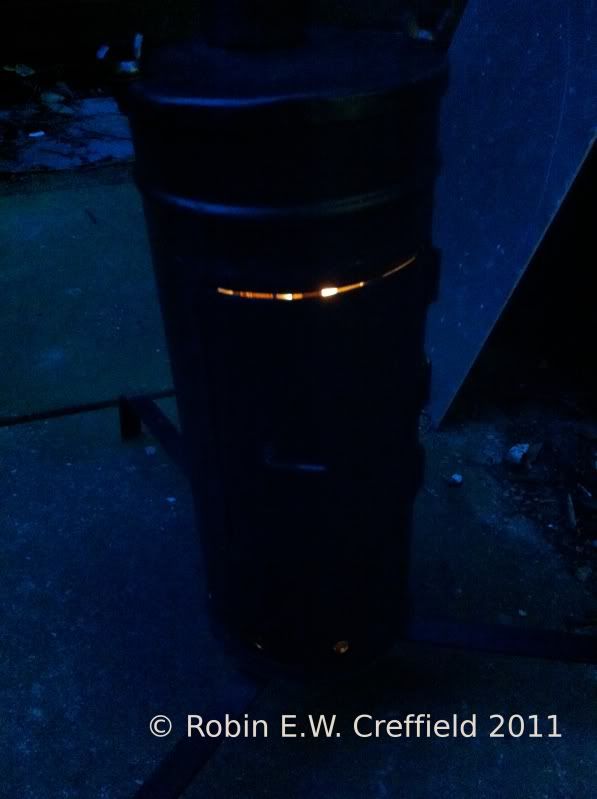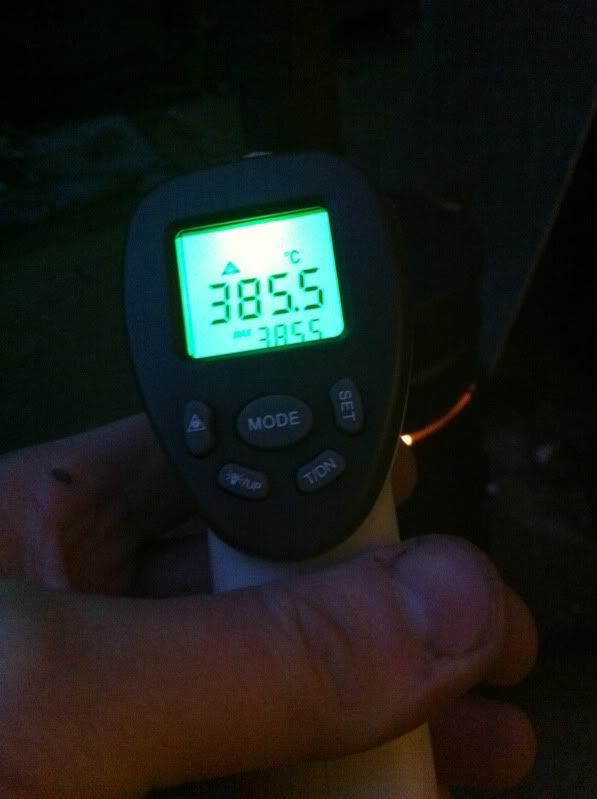What I thought could be improved on his stove was as follows:
- stability - the legs were very tall and quite close together. On soft ground it wasn't a problem as they could be pushed in
- portability - the legs were fixed length and although bits of the flue fitted inside the stove, the rest didn't - I wanted mine to be completely self-contained
- size - for car camping it was great but would take up too much room in a rucksack. I wanted one that would fit inside a rocket pack on my Bergen

